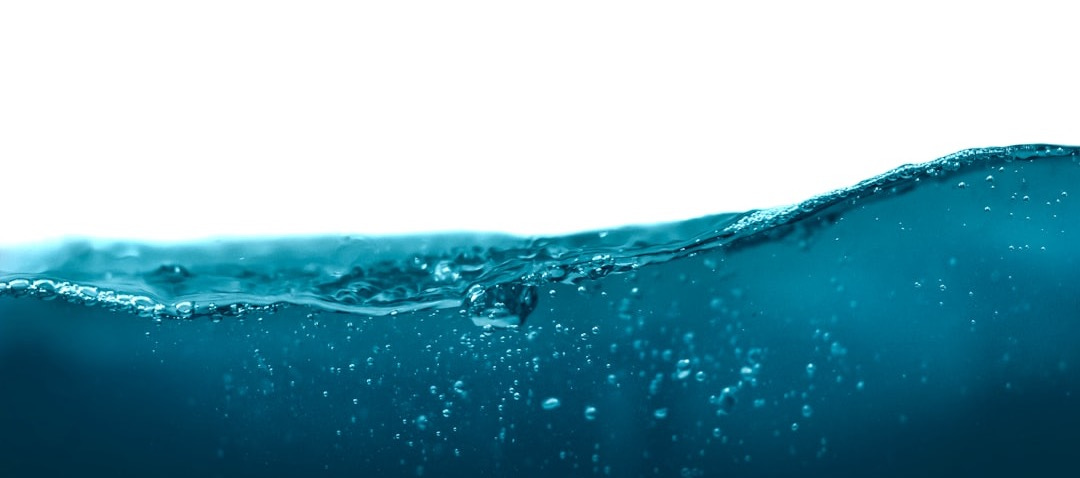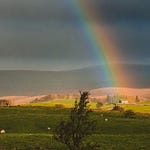1. Water in Creation and Cosmic Order
A. Primordial Waters
Genesis 1 introduces water as primordial reality:
Pre-creation state: "The Spirit of God was hovering over the waters" (Gen 1:2)
Divine ordering: God separates waters above from waters below
Life-giving potential: Dry land emerges from waters, enabling life
Controlled chaos: Waters represent both creative potential and destructive force
B. Water as Sustainer of Life
The creation narrative establishes water's essential role:
Eden's rivers: Four rivers flow from Eden (Gen 2:10-14)
Necessary for life: Plants, animals, and humans require water
Symbol of abundance: Well-watered gardens represent divine blessing
Covenant sign: Rainbow appears after rain (Gen 9:13)
2. Water as Judgment and Deliverance
A. The Flood Narrative
The flood reveals water's dual nature:
Instrument of judgment: Waters destroy corrupt creation (Gen 6-7)
Means of salvation: The ark floats on judgment waters
Cosmic reversal: Return to pre-creation chaos
New creation: Waters recede, revealing renewed earth
Baptismal prefigurement: 1 Peter 3:20-21 connects flood to baptism
B. The Exodus Event
The Red Sea crossing epitomizes water's dual function:
Barrier becomes path: Waters part for Israel
Salvation and destruction: Same waters save Israel, destroy Egypt
Baptismal imagery: Paul sees this as baptism "into Moses" (1 Cor 10:2)
Divine sovereignty: God controls chaotic waters
C. Jordan Crossing
Entering the Promised Land through water:
Completion of exodus: Jordan crossing mirrors Red Sea
Priestly leadership: Ark-bearers stand in the river
Memorial stones: Taken from riverbed as testimony
Ritual significance: Sets pattern for later crossings (Elijah, Elisha, Jesus)
3. Water in Ritual and Worship
A. Ceremonial Cleansing
Levitical law establishes water's purifying role:
Priestly washing: Priests wash before service (Ex 30:18-21)
Purification rituals: Various washings for ritual impurity
Mikvaot: Ritual baths for immersion
Day of Atonement: High priest bathes before and after
B. Temple Imagery
Water in temple worship:
Bronze Sea: Massive water basin in Solomon's temple
Lavers: Multiple washing stations
Flowing water: Preferred for certain rituals
Eschatological river: Ezekiel's temple vision (Ezek 47)
C. Prophetic Cleansing
Prophets use water imagery for spiritual renewal:
Isaiah: "Wash and make yourselves clean" (Is 1:16)
Ezekiel: "I will sprinkle clean water on you" (Ezek 36:25)
Zechariah: Fountain opened for cleansing (Zech 13:1)
4. Water in Wisdom and Poetry
A. Metaphorical Usage
Wisdom literature employs water imagery:
Divine provision: "He leads me beside quiet waters" (Ps 23:2)
Spiritual thirst: "As the deer pants for streams of water" (Ps 42:1)
Righteous flourishing: Like trees planted by water (Ps 1:3)
Truth and wisdom: Deep waters of understanding (Prov 20:5)
B. Drought and Abundance
Contrasting water states symbolize spiritual conditions:
Drought: Divine judgment or spiritual barrenness
Rain: Blessing and divine favor
Springs: God as source of living water
Rivers: Abundance and continuous provision
5. New Testament Transformation
A. John the Baptist
Water baptism begins the New Testament:
Repentance baptism: Preparation for the kingdom
Jordan River: Echoes Israel's history
Messianic expectation: One coming with Spirit and fire
Transition ritual: From old covenant to new
B. Jesus and Water
Christ's ministry features water prominently:
Baptism:
Identifies with sinners in Jordan
Heavens open, Spirit descends
Establishes pattern for believers
Teaching:
Living water discourse (John 4)
Invitation to the thirsty (John 7:37-39)
Walking on water demonstrates divine authority
Miracles:
Water to wine: First sign of new creation
Calming storms: Authority over chaos
Washing disciples' feet: Servant leadership
Death:
Water flows from pierced side (John 19:34)
Significance: Birth of church, cleansing provision
C. Christian Baptism
Baptism becomes central Christian ritual:
Romans 6: Burial and resurrection with Christ
Colossians 2:12: Spiritual circumcision
Titus 3:5: "Washing of regeneration"
1 Peter 3:21: Antitype of flood salvation
Theological dimensions:
Cleansing from sin
Union with Christ
Entry into covenant community
Pledge of good conscience
6. Theological Themes
A. Chaos and Order
Water represents:
Primordial chaos: Threatening disorder
Divine sovereignty: God controls waters
Judgment: Chaos unleashed on sin
New creation: Order from chaos
B. Death and Life
Paradoxical nature:
Death: Drowning, flood, judgment
Life: Necessary for survival
Transformation: Passage through death to life
Resurrection: Emerging from baptismal waters
C. Cleansing and Renewal
Purification aspects:
External washing: Ritual cleanliness
Internal cleansing: Spiritual renewal
Moral transformation: Repentance and forgiveness
Eschatological purification: Final cleansing
D. Spirit and Water
Interconnected imagery:
Creation: Spirit over waters
New birth: Water and Spirit (John 3:5)
Pentecost: Spirit poured out like water
Rivers of living water: Spirit's indwelling
7. Ecclesiological Significance
A. Baptismal Identity
The church defined by water:
One baptism: Unity in Christ (Eph 4:5)
Baptismal formula: Trinitarian invocation
Covenant sign: Replacing circumcision
Universal practice: All believers baptized
B. Ongoing Cleansing
Continual purification:
Foot washing: Ongoing cleansing need
Word washing: Scripture's cleansing power (Eph 5:26)
Confession: Cleansing from unrighteousness
Sanctification: Progressive purification
8. Eschatological Consummation
A. Final Judgment
Water in end times:
No more sea: Chaos eliminated (Rev 21:1)
Lake of fire: Paradoxical judgment imagery
Universal flood: Not repeated (divine promise)
B. Eternal Provision
New creation water:
River of life: From God's throne (Rev 22:1)
Water of life: Freely given (Rev 22:17)
No more thirst: Eternal satisfaction
Crystal sea: Perfect peace and order
C. Healing Waters
Restoration imagery:
Living water: From Jerusalem (Zech 14:8)
Healing leaves: Trees by the river
Year-round flow: Continuous provision
Universal blessing: Waters heal everything
9. Practical and Spiritual Applications
A. Individual Spirituality
Water imagery shapes devotion:
Spiritual thirst: Longing for God
Daily cleansing: Confession and renewal
Baptismal identity: Living out baptismal meaning
Trust in provision: God as living water
B. Corporate Worship
Liturgical practices:
Baptismal services: Central to church life
Water symbolism: Fonts, baptisteries
Renewal rituals: Reaffirmation of baptism
Eucharistic water: Mixed with wine in some traditions
C. Mission and Ethics
Water theology impacts:
Environmental care: Stewardship of water
Justice issues: Access to clean water
Baptismal hospitality: Welcoming through water
Healing ministry: Physical and spiritual cleansing
10. Integration and Synthesis
A. Christocentric Focus
All water imagery points to Christ:
Living water source: Satisfies spiritual thirst
Baptizer: Grants Spirit baptism
Flood survivor: New Noah bringing salvation
Temple spring: Source of healing waters
B. Trinitarian Dimensions
Water reveals Trinity:
Father: Creator of waters, source of life
Son: Living water, baptized one
Spirit: Hovering over waters, poured out
C. Salvation History
Water marks redemptive milestones:
Creation: Life from water
Flood: Judgment and new beginning
Exodus: Deliverance through water
Baptism: Incorporation into Christ
Consummation: Eternal water of life
Conclusion
The biblical theology of water reveals a complex, multifaceted symbol that runs like a river through Scripture. From the primordial waters of creation to the crystal river of the new Jerusalem, water serves as a powerful theological metaphor for:
Divine sovereignty over chaos and creation
Judgment and salvation operating through the same means
Cleansing and renewal both ritual and spiritual
Life and death in paradoxical unity
Present provision and eschatological hope
This comprehensive theology demonstrates how physical water becomes a vehicle for profound spiritual truth, ultimately pointing to Christ as the source of living water and the Holy Spirit as the one who satisfies humanity's deepest thirst. The church, born through water and the Spirit, continues to proclaim and practice this water theology through baptism, while anticipating the day when God's people will drink freely from the river of the water of life.












